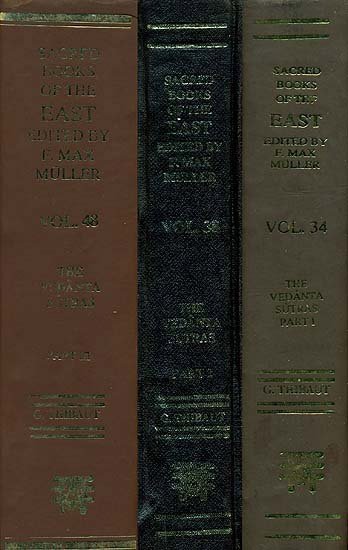Brahma Sutras (Ramanuja)
by George Thibaut | 1904 | 275,953 words | ISBN-10: 8120801350 | ISBN-13: 9788120801356
The English translation of the Brahma Sutras (also, Vedanta Sutras) with commentary by Ramanuja (known as the Sri Bhasya). The Brahmasutra expounds the essential philosophy of the Upanishads which, primarily revolving around the knowledge of Brahman and Atman, represents the foundation of Vedanta. Ramanjua’s interpretation of these sutras from a V...
Sutra 1.3.22
22. The same is declared by Smṛti also.
Smṛti also declares that the transmigrating soul when reaching the state of Release 'imitates,' i.e. attains supreme equality of attributes with the highest Brahman. 'Abiding by this knowledge they, attaining to equality of attributes with me, are not born again at the time of creation, nor are they affected by the general dissolution of the world' (Bha. Gī. XIV, 2).
Some maintain that the last two Sūtras constitute a separate adhikaraṇa (head of discussion), meant to prove that the text Mu. Up. II, 2, 10 ('After him the shining one, everything shines; by the light of him all this is lighted'), refers to the highest Brahman. This view is, however, inadmissible, for the reason that with regard to the text quoted no pūrvapaksha can arise, it having been proved under I, 2, 21 ff., and 1,3, 1, ff., that the whole section of which that text forms part is concerned with Brahman; and it further having been shown under I, 1, 24 ff., that Brahman is apprehended under the form of light.—The interpretation moreover does not fit in with the wording of the Sūtras.—Here terminates the adhikaraṇa of the 'small one.'
